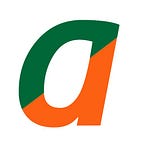3 core elements of drone management system architecture
The architecture of any drone management software depends on its goals, use cases, and hardware capabilities. However, such systems have something in common. For instance, in terms of programming languages, developers prefer writing low-level code in C/C++. These languages are quite flexible and provide fine control over low-level processes.
Python is a popular choise for programming high-level functions. It’s a universal language that can help developers accomplish common tasks. However, it may be more convenient to use other languages for some specific development activities.
And when it comes to the system architecture, any drone management system consists of:
System software
This is the foundation of a drone management system architecture that controls UAV hardware. It includes embedded software, drivers, an operating system, and APIs for communicating with the rest of the system.
This level of software manages basic drone operations:
- Flying
- Charging
- Navigating and calculating the drone’s location
- Scanning barcodes and taking pictures
- Collecting and transmitting data
- And more
Another goal of this type of software is to ensure secure collection of information. Embedded systems can be extremely vulnerable to hacking, as they have limited computing resources. Usually, they are equipped only with a small CPU and a small amount of memory. Overloading them with too many tasks creates delays in the real-time work of the system and may cause incorrect task execution.
Some developers neglect data protection features to use more resources for core system functionality, which leads to data leaks and breaches. But there are ways to secure collected information at the software level. You can learn more about embedded system security from our previous article.
User software
Software for users of drone management systems is designed to help warehouse employees remotely control drones. User software is usually delivered in the form of web and mobile applications. Developing these apps is similar to developing regular mobile apps.
To ensure precise control over UAVs, user applications need to communicate with drones in real time, support a stable internet connection, and have an easy-to-use and intuitive user interface.
Control platform
The control platform is the brain of the drone management system: it collects, processes, and stores data gathered by drones. It also helps users manage those drones. The platform can be hosted both locally and in the cloud.
The software elements of the control platform highly depend on the goals and target functionality of the drone management system. Such platforms usually include:
- Enterprise data management technologies and processing systems
- Artificial intelligence (AI) algorithms for data processing
- Navigation management
- Cloud infrastructure
- Communication protocols for exchanging data between drones, user apps, and the control platform
- APIs for integration with warehouse management systems
These three elements represent only the core of a drone management system. Within these elements, vendors implement various features and technologies to make their software more technologically advanced and competitive on the market. In the full article on our blog, we’ll take a look at the key drone management system features and technologies.
